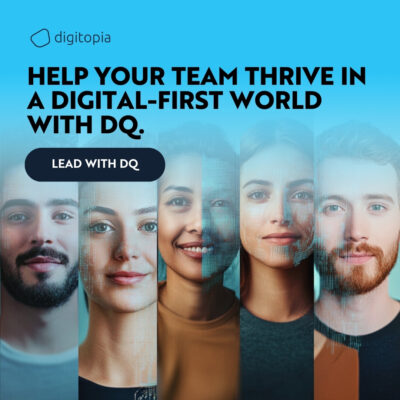
At its core, digital transformation is as much about changing mindsets and behaviors as it is about adopting new technologies. A culture that is open to change, values continuous learning, and encourages experimentation is crucial for the successful implementation of digital initiatives. Without a supportive culture, even the most meticulously crafted strategies and advanced technologies can falter.
Understanding Organizational Culture
Organizational culture encompasses the shared values, beliefs, and behaviors that determine how a company’s employees interact and how the organization conducts its business. A culture conducive to digital transformation is characterized by flexibility, agility, and a forward-thinking outlook. It values innovation, rewards risk-taking, and views failure as a learning opportunity rather than a setback.
The Challenges of Cultural Change
Changing an organization’s culture is no small feat. It requires a deep understanding of the existing culture, a clear vision of the desired state, and a strategic plan to bridge the gap. Resistance to change is a common obstacle, rooted in fear of the unknown, comfort with the status quo, and skepticism about new initiatives. Overcoming this resistance requires persistent effort, clear communication, and, most importantly, visible support and commitment from leadership.
Strategies for Fostering a Culture in Digital Transformation
Leadership Commitment and Role Modeling
Leadership plays a pivotal role in driving cultural change. Leaders must not only articulate a clear vision for the digital transformation but also embody the values and behaviors they wish to instill in the organization. By actively participating in digital initiatives, demonstrating a willingness to experiment and learn from failures, and rewarding innovative thinking, leaders can set the tone for the entire organization.
Engaging and Empowering Employees
Employee engagement is critical for the success of digital transformation efforts. This involves not just informing employees about the changes but actively involving them in the process. Soliciting their ideas, addressing their concerns, and providing opportunities for them to develop new skills can foster a sense of ownership and commitment to the transformation journey.
Building Digital Fluency
Cultural change in the context of digital transformation also involves building digital fluency across the organization. This means providing employees with the training and resources they need to understand and leverage digital technologies effectively. Equally important is fostering a mindset of continuous learning, where employees are encouraged to keep abreast of technological advancements and explore how they can be applied to their work.
Leveraging DMI to Navigate the People Side of Digital Transformation
In the intricate dance of digital transformation, the steps taken to align people and culture with technological and strategic goals are among the most complex but also the most rewarding. The inclusion of people and culture as a distinct dimension in the Digital Maturity Index (DMI) offers a systematic approach to managing this alignment, ensuring that the human elements of transformation are not just acknowledged but actively cultivated and measured.
The Strategic Importance of Measuring People and Culture
The process of transforming an organization’s culture to support digital initiatives cannot be left to chance. It requires a deliberate strategy, part of which involves regular measurement and assessment of how effectively the organization is engaging its employees and fostering a culture conducive to digital innovation. The DMI provides a structured framework for this assessment, allowing organizations to benchmark their progress and identify areas for improvement.
Key Components of the People and Culture Dimension
When measuring the people and culture dimension of the DMI, several key components come into play:
Leadership Engagement and Support: Assessing the extent to which leadership is committed to and actively supports digital transformation efforts.
Employee Digital Fluency: Measuring the level of digital skills across the organization and the effectiveness of training and development programs.
Innovation and Risk-Tolerance: Evaluating the culture’s openness to innovation and tolerance for risk and failure, which are crucial for fostering an environment where digital transformation can thrive.
Change Management and Communication: Gauging the effectiveness of change management practices and how well the vision and details of digital transformation initiatives are communicated throughout the organization.
Driving Cultural Transformation Through Measurement
The act of measuring people and culture within the DMI framework serves multiple purposes. It not only provides insights into the current state of the organizational culture but also helps identify specific areas where interventions are needed to enhance digital readiness and agility. Furthermore, by regularly benchmarking against these measures, organizations can track their progress over time, adjust their strategies as needed, and maintain momentum in their cultural transformation efforts.
Case Study: Achieving Cultural Alignment through DMI
Consider the example of a manufacturing company that utilized the DMI to transform its organizational culture. By regularly assessing its people and culture dimension, the company identified a need to improve its leadership engagement in digital initiatives. In response, it implemented a series of leadership workshops focused on digital transformation, fostering a greater understanding and commitment among its leaders. This, coupled with targeted training programs to build digital fluency across the workforce, led to a marked improvement in the company’s digital maturity and a more robust culture of innovation and agility.
DQ: Empowering Individuals to Build Strong Teams
While DMI focuses on organizational culture and alignment, DQ (Digital Quotient) complements it by assessing and developing the digital capabilities of individuals. Together, they provide a holistic approach to driving cultural transformation. Why DQ is Critical for Cultural Transformation The success of any digital transformation lies in the hands of individuals. Empowering team members with the right digital skills and mindset ensures they can contribute meaningfully to broader organizational goals. DQ focuses on bridging gaps in individual readiness, creating a foundation for resilient and high-performing teams.
Driving Digital Capability Development with DQ
- Comprehensive Assessment: Evaluate individual readiness across all dimensions of DQ.
- Tailored Growth Paths: Provide actionable recommendations to bridge skill gaps.
- Empowering Individuals: Focus on upskilling individuals to build stronger, more adaptive teams.
Conclusion: A Unified Approach with DMI and DQ to Cultural Transformation
Digital transformation is both a cultural and individual journey. While DMI aligns organizational culture with digital goals, DQ ensures that individuals are empowered to contribute meaningfully to these efforts. Together, they create a comprehensive roadmap for success, fostering innovation, engagement, and adaptability at every level.
Organizations that prioritize both cultural alignment and individual empowerment will be best positioned to navigate the complexities of the digital age. By leveraging the combined strengths of DMI and DQ, businesses can build a digitally fluent workforce, foster a culture of innovation, and achieve sustainable transformation.



